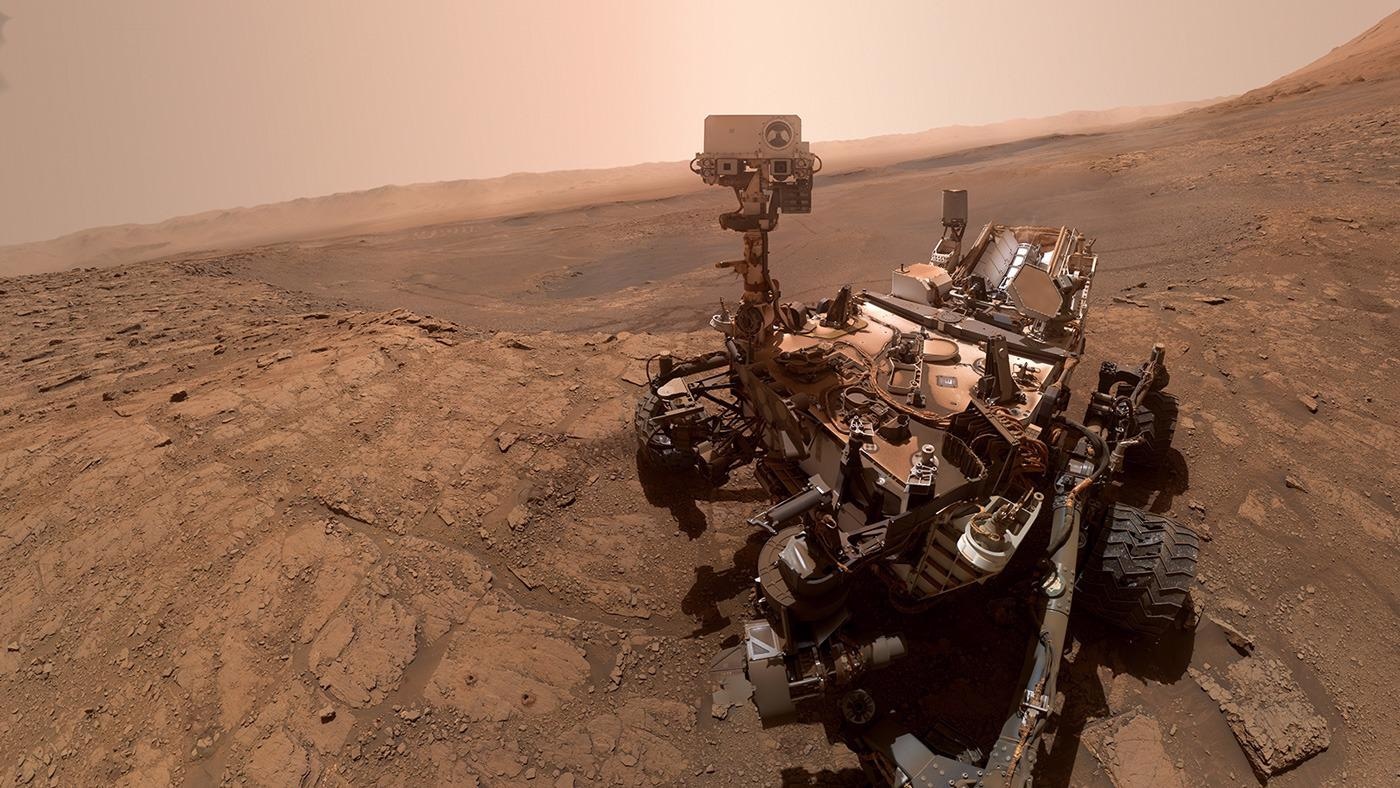
NASA's Curiosity Rover. Image Credit: NASA
A long-cycle, award-winning engineering project from NASA’s Ames Research Center placed x-ray diffraction (XRD) and x-ray fluorescence (XRF) instruments on the Curiosity rover to identify almost every mineral Curiosity encountered on Mars. The CheMin devices performed the first quantitative mineralogy analysis of Mars and found the first habitable environment in space.
CheMin’s Mission to Mars
Chemistry and Mineralogy (CheMin) XRD/XRF instruments result from decades of work at the Ames Research Center in California, US. David Blake, Principal Investigator at the Center, led the development of these devices in the Jet Propulsion Laboratory at Ames from 1989 to 2004.
The XRD and XRF instrumentation developed by Ames – working with collaborators on small components – was a crucial part of NASA’s Mars Science Laboratory (MSL) mission. MSL built and delivered advanced, automated surveying and meteorology capability to Mars.
CheMin instruments were fitted to the MSL Curiosity rover, which landed as planned inside the Gale crater on Mars in August 2012. The instruments took scooped soil and drilled rock samples and completed mineralogical identifications and quantitative phase abundance studies, reporting back to Earth.
The CheMin devices are still on Mars as Curiosity’s mission was extended indefinitely after completing its first and second years’ missions successfully. Since starting the mission, these XRD/XRF instruments have been responsible for some significant discoveries on the Red Planet.
XRD instruments on Curiosity led to discovering the first habitable environment on any other planet in 2014. Collecting data on CO2 levels, they set the limit for CO2-driven gas warming on early Mars. They also enabled the characterization of a 3.7 billion-year-old crater lake on the planet, analyzing the depositional and diagenetic properties of the environment.
Could it have Previously Been Possible to Live on Mars?
The Ames-developed CheMin instruments on the Curiosity rover are a critical element of MSL’s main goal: to characterize the potential habitability of the early Martian environment. In addition, Curiosity is looking for signs that life could have existed on Mars when it was a younger planet.
With XRD, it is possible to precisely determine the mineral and chemical composition of the surface of Mars. As well as identifying minerals, chemical, and atomic structure in rock and soil samples, XRD can be used to determine the conditions under which such mineral samples were formed. The mineral formation and the environment’s temperature, pressure, and chemistry (including whether there was water present) are all revealed through XRD analysis.
This analysis was important for Curiosity’s – and the whole MSL’s – mission to assess whether Mars had ever supported life. Curiosity was searching for evidence of an environment capable of supporting the existence of tiny microbial life forms.
The CheMin XRD and XRF instruments onboard Curiosity carried out the first quantitative mineralogy analysis of the planet. With this technology, we now have advanced knowledge of the character of the surface crust and atmosphere on Mars.
From finding evidence of water billions of years ago to other atmospheric and mineralogical discoveries only possible with XRD technology, the CheMin devices on the Curiosity rover successfully determined that Mars was capable of supporting life years ago.
Mars Diffracts! X-ray Crystallography and Space Exploration
Video Credit: The Royal Institution/YouTube.com
The Instruments that Look for Life on Mars
The XRD/XRF instrumentation onboard the Curiosity rover is built with a cooled charge-coupled device (CCD) detector. This unique technology saves significant weight and bulk on the rover. The detector is arranged in transmission geometry to the sample, with an angular range of 5° to 50° 2θ with <0.35° 2θ resolution. This is ample for the identification of nearly all types of minerals that Curiosity encounters on Mars.
Ames is producing x-ray metrology instruments based on the CheMin devices on Curiosity. MapX is an imaging x-ray fluorescence spectrometer, while PIXI is an x-ray computer tomography scanner.
The XTRA CheMin XRD/XRF instruments currently being developed are destined for Earth’s moon, while Venus and Mercury are due to receive visits from CheMin-V and CheMin-X instruments in the coming years.
References and Further Reading
Blake, David (2012). “Characterization and Calibration of the CheMin Mineralogical Instrument on Mars Science Laboratory.” Space Science Reviews. [Online] https://doi.org/10.1007/s11214-012-9905-1
“David Blake – The CheMin Ecosystem: X-ray Instrument Development at Ames” (2021). NASA Ames Office of the Chief Scientist. [Online] https://www.nasa.gov/ames/ocs/scientific-awards/h-julian-allen-award/david-blake
Disclaimer: The views expressed here are those of the author expressed in their private capacity and do not necessarily represent the views of AZoM.com Limited T/A AZoNetwork the owner and operator of this website. This disclaimer forms part of the Terms and conditions of use of this website.